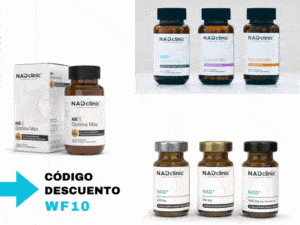In the age of smart wearables and self-awareness, wellbeing has become a quantified experience. Heart rate, deep sleep, stress, VO₂ max, HRV... each piece of data seems to offer us a piece of the puzzle of our health. But to what extent can - or should - we become our own doctors, guided by an algorithm?
The recent warning issued by the FDA (US Food and Drug Administration) vs. the company WhoopThe launch of a new product by the company, for marketing a feature that estimates blood pressure without medical approval, has reignited a crucial question for the wellness world:
What are the risks when technology begins to cross the line between wellness and medicine?
Whoop launched in May a feature called Blood Pressure Insightswhich provides estimates of systolic and diastolic blood pressure based on data collected during the user's sleep. According to the company, it is a wellness tool, not a diagnostic tool. However, the FDA does not see it that way. any function that can be interpreted as a measure of health with clinical implications should be regulated. as a medical device.
And here is the problem: users often fail to distinguish between wellbeing and clinical diagnosis. When given a blood pressure number (even if accompanied by disclaimers), the human brain tends to interpret it as 'medical' data, which can lead to worry, overconfidence or even unprofessional decisions.
The risk of "portable diagnostics".
The rise of wearable technology has democratised access to health metrics, but it has also fostered the illusion of absolute control. Today, many people rely on their smartwatch or wristband to decide whether they should train, rest, get more sleep, or even consult a doctor. Some devices already offer alerts about possible arrhythmias, apnoea or abnormal oxygen saturation. However:
- Much of this data is not clinically validated.
- The algorithms do not take into account individual factors such as medication, emotions, altitude, hydration or stress.
- Variations in accuracy can lead to misinterpretation and even misdiagnosis.
This brings us to an ethical dilemma: while these devices can help us to raise awareness and prevent, they can also creating a false sense of security or unnecessary alarm.
Interpretation of physiological data requires context, experience and clinical judgement. Two people can have the same resting heart rate, but mean completely different things depending on their medical history, emotional state, recent physical activity or previous illness.
When algorithms attempt to translate biometric data into interpretable conclusions, without medical oversight, we run the risk of confusing statistical predictions with individual diagnoses.
Well-used technology can be a great ally of well-being. However, the boundary between wellness and medicine cannot be defined by marketing or the manufacturer's intentions alone.. It must be governed by clear ethical, scientific and regulatory criteria.
In a world where more and more people want to understand their bodies and take control of their health, it is crucial to educating the userremind you that the devices are support tools, not a substitute for professional diagnosis.
The human body is not a set of metrics. It is a complex system, with multiple variables in constant interaction. And, for now, no algorithm has been able to replicate the sensitivity, intuition and holistic view of a good doctor..






